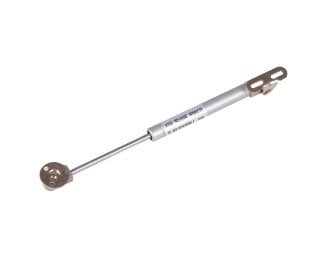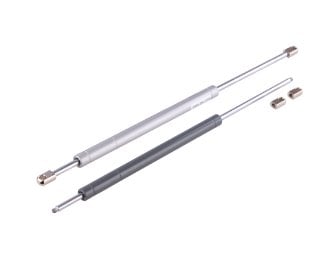If you are interested in our products ,please contact our team
Gas springs and their close cousins are abundant in many industries and applications. From overhead bins in airplanes, and from cargo doors to armored vehicle doors, gas springs have a variety of applications.
Their relatively simple design makes them an affordable option to create force or support moving objects. Today we will see what are gas springs and how do they work.
Gas springs are versatile hydro-pneumatic (containing both nitrogen gas and liquid) lifting mechanisms that help us raise, lower and support heavy or cumbersome objects more easily.
They’re most widely seen in various configurations of door hardware, but the potential uses are near limitless. In everyday use, gas springs are now very commonly found in vehicle compartments, supporting adjustable chairs and tables, on all manner of easy-open hatches and panels, and even in small electronic devices.
As the name suggests, these springs rely on pressurized nitrogen gas, along with some oil-based lubricant , to support or oppose a range of external forces. The compressed nitrogen gas offers a controlled way of storing and releasing energy as smooth, cushioned movement, transferred via a sliding piston and rod.
They’re also commonly referred to as gas struts, rams or dampers, although some of these terms imply a specific set of gas spring components, configurations and intended uses. Technically speaking, a standard gas spring is used to support objects as they move, a gas damper is used to control or limit that motion, and a damped gas spring tends to handle a bit of both.

Gas springs work in a similar manner to your basic mechanical compression spring. However, instead of using elastic deformation to store potential energy, they use gas cylinders to store energy pneumatically. These springs usually use nitrogen gas, but not always.
Compressing the gas by pushing the piston into the cylinder stores energy, which is released when the piston slides out. Just like a basic mechanical spring, gas springs don’t have any innate motion control ability.
While gas springs usually have a short stroke, meaning the spring travels over a relatively small distance, once the energy starts releasing and the spring starts expanding, it goes all out until the maximum stroke length is reached.
Depending on the application, this can produce significant force.
Notably, gas springs provide a near-constant force. (For reference, mechanical or wire springs change force when deflected.)
With the right design, heavy-duty gas springs can produce an impressive amount of force. No wonder they’re popular in applications like stamping dies, where the stamping press needs to slam down with enough force to stamp shapes out of solid steel and other tough metals.

Zhili Gas Spring specializes in the development and production of high-quality gas springs and buffers, with independent research and development and production capacity, the production of gas springs and buffers have more than 1000 kinds of specifications, through the SGS test, to meet the EU ROHS standards, and also has a number of patent certificates.
We always devote ourself on this field ,pay attention to the technical knowledge and the research of products, make various customized solutions for clients, regard product quality and client satisfaction as our company’s first mission.
If you have any inquiries or questions, please kindly contact us.